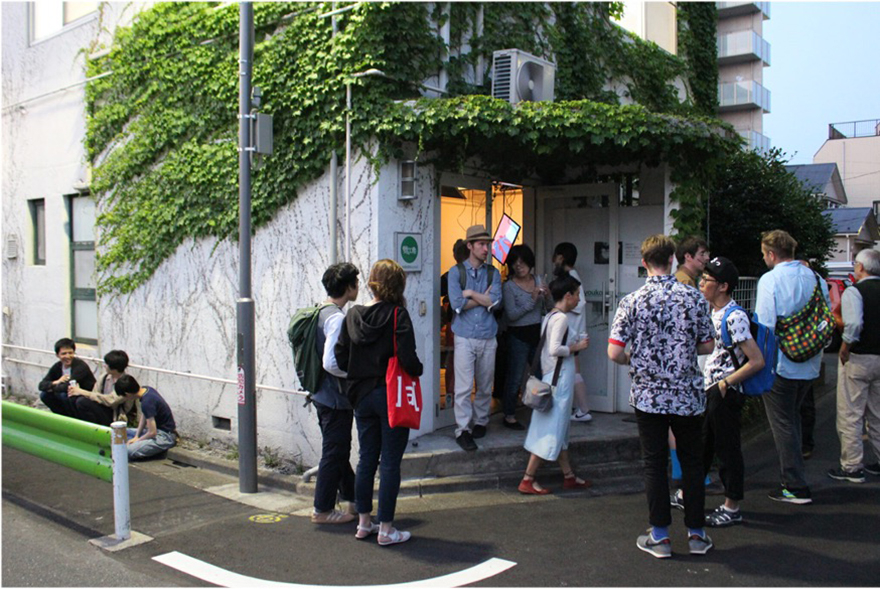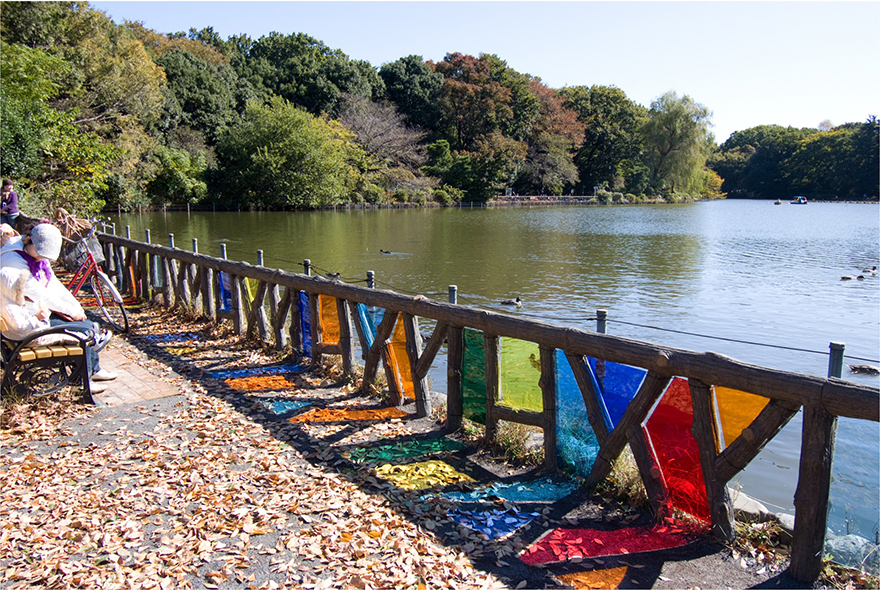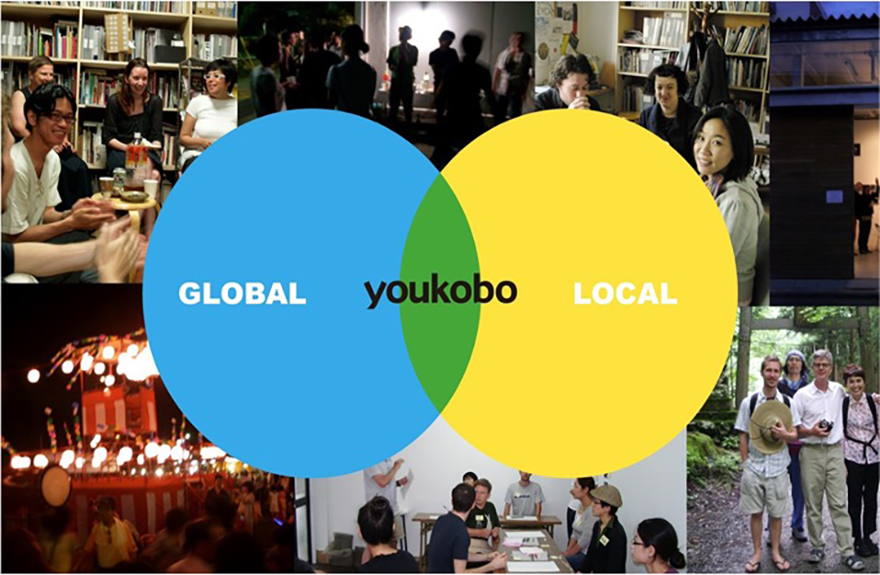What is AIR (Artist-in-Residence)? (4):
Residency network (1)—the discovery of microresidencies
By Murata Tatsuhiko

In 2000, Youkobo, which until then had been pursuing its residency operations through the practice of various international exchange activities with Europe, the Middle East and Australia, decided to concentrate its art activities in Zenpukuji in Tokyo’s Suginami Ward, where it reopened as a multifunctional art facility incorporating a gallery space specializing in contemporary art, creative studios and accommodation spaces. Its name also changed from “Studio Youkobo” to “Youkobo Art Space” as it became a base for global activities in the form of the acceptance of overseas artists and the dispatch of Japanese artists abroad, while continuing to promote creative activities rooted in the community at a local level and beginning to invite applications for its AIR program.
Together with acceptance and dispatch support activities in various forms arising from access from former residents and exchanges with residency operators, as well as requests for acceptance from international exchange organizations, these developments signaled Youkobo’s commencement of AIR activities in earnest. In 2001 Youkobo became a member of ResArtis—Worldwide Network of Arts Residencies (RA), a member organization for the international residencies field that has since became an important foundation for its activities.
In 2004 it participated in RA’s biennial conferences for the first time in Sydney and Melbourne, where it introduced itself as “operator of the world’s smallest residency in the global metropolis of Tokyo.“ Since then it has participated in RA’s conferences as often as opportunity has allowed, networking with fellow operators of residencies around the world and beginning fully-fledged exchanges, including reciprocal visits. In 2007 it also became involved in the administration of RA, and I began my eight-year term as director of membership. Activities at RA’s conferences were always enriching, and included not only understanding the residency situation in host countries/cities and undertaking exchanges with other members, but also engaging in lively discussions on the latest topics.

The second artist to be accepted under Youkobo’s Japan Foundation invitation program after the first in 1996 was Finnish sculptor Antti Ylonen. Ylonen’s stay of six months at the Youkobo Art Space beginning in January 2002 further enriched his practice through his contact with Japanese wood, Japanese woodworking tools and other things unique to Japan. As well, his awareness as a Scandinavian used to living in a natural environment and experience of several open-air art exhibitions resonated with Youkobo’s desire at the time to pursue art activities rooted in the local community and resulted in the staging of the inaugural Trolls in the Park open-air art exhibition at Zenpukuji Park. “My stay at Youkobo was not only extremely important for me as an individual and for my career as an artist, but also a decisive event that motivated me to establish the KulttuuriKauppila Art Center (KKAC) in Ii, Finland,” commented Ylonen.
The establishment of the KKAC and the staging of the local open-air Art Ii Biennial with the support of local fellow artists, local municipalities and the EU have enlivened activities that are peculiar to Lapland in northern Scandinavia, which is different from the Finnish capital of Helsinki. Ylonen is currently involved in running Art Break, a private AIR facility he later set up separately from KKAC. In establishing Art Break, our support was also beneficial, resulting in us cooperating with each other and myself becoming involved in the administration of RA. While I was director of membership, we were able to gain the cooperation not only of RA members, but also of fellow operators of residences in Japan and overseas in investigating and analyzing the true state of the diverse residences around the world, leading to the “discovery of microresidencies.”[*1]
[*1] “The Micro Possibilities of a Micro Art Space-An Interim Report on Microresidence Research”
“I.H.K.Y.L.H.K.Y…”, Yuichiro Kurono, Trolls in the Park 2009
Later, in 2013, various efforts were made towards establishing an international network of microresidencies, with operators of microresidencies in various countries gathering at Youkobo, an investigation being conducted by visiting facilities in Tokyo, Fukuoka/Itoshima, Rikuzentakata and other locations within Japan with the participation of Hinuma Teiko’s office at Joshibi University of Art and Design (the first hub for residency research at a Japanese art university) and operators themselves establishing an online presence, the results of which were published as “MICRORESIDENCE! 2013/2014: Considering Artist in Residence (AIR): A home for the creative activities of artists—its structure as an important vessel within society and the potentials of a network.” Microresidence Network Forums were later held in Cheongju, South Korea in 2014, Saitama in 2015, and Yerevan, Armenia, and Oulu, Finland in 2016, each hosted by microresidency operators in the respective cities. [*4]
These activities involving the discovery of microresidencies and the promotion of networking marked the beginning of a process of trial and error that included the acceptance of artists from Japan and overseas, the dispatch of Japanese artists overseas in conjunction with exchange programs and the creation of opportunities for young artists to experience residencies. This period became an important signpost for future activities, particularly with respect to the lack of public awareness of residency programs themselves and the importance of building a framework for the creation of opportunities for young artists to experience living and working in a different culture.
At the same time, such activities as our participation in J-AIR Network, a network for residencies in Japan, and our making the most of the advantage of our location in Tokyo to host forums in the cultural centers in the various foreign embassies have been of tremendous assistance in our efforts so support artists interested in taking part in AIR programs.[*5]
[*2] “Artist in Residence, from a Micro Perspective.”[*3] “Considering Artist in Residence(AIR)-It’s structure as an important vessel within society and the
potentials of a network-“
[*4] Microresidence Network Web Site
[*5] J-AIR Network Forum

Youkobo Art Space: Joining International and Local Communities.
At this point, let me say a word about the term “microresidency.”
2It derives from a description of Youkobo by New York artists Luis Recorder and Sandra Gibson based on their own experience of staying there for three months in 2005. As a common understanding among fellow artists at the time, it was envisaged as indicating an artist-led, small-scale, independent residency program. More specifically, it refers to residencies that are small in scale (facilities, budget), artist-run and independent, that offer grassroots exchanges, that have a flexible and substantial support structure, and that value person-to-person relationships. From not only RA, but also the AIR database maintained by the Dutch-based TransArtists, one can see that a great number of AIR programs are available around the world, and that not only large-scale residences but residences of various forms and sizes exist.
Answers to questions such as how to define AIR and what functions and advantages they should have can probably be found by reconsidering AIR while comparing the environment and social background of each residence. Needless to say, the trend towards artists and art organizations creating their own art spaces seems to be ongoing. The growing number of small-scale residences seems to be indicating a new direction for AIR programs. The COVID-19 pandemic that began in early 2020 was a significant event that led to the suspension and reduction of AIR programs, but through the resumption of direct communication and exchanges, these diverse residencies, including life-sized microresidencies run mainly by artists, will no doubt inform people far and wide of the activities and realities of residences and provide answers to the fundamental questions of the reason for the existence of AIR as social vessels and the existence of artist as a vocation.[*7] [*8]
[*6] A Micro-Flexible Arts Community In Tokyo[*7] resources in regards to the effects of COVID-19 on creatives and arts organizations
[*8] Report of “Reflections on Artist Residencies from the Pandemic -Artist Residencies and the Pandemic Survey: Report 2020”
- “What is AIR? (1): The origins of the Youkubo AIR program“
- “What is AIR? (2): A Sculpture Symposium“
- “What is AIR? (3): 50 years of Youkobo, 30 years of residency activities, and the Fujino annex“
- “What is AIR? (5): Putting Y-AIR into practice and the start of an international network“
Tatsuhiko Murata
Having worked as an engineer for almost 30 years, together with his partner, Hiroko Murata, established their own art center as Youkobo Art Space since 1988, has worked to promote art through the running of a dynamic Artist Residency Program in Tokyo. From 2010 he initiated research into artist-run and micro-scale residency programs, so called MICRORESIDENCE, throughout the globe with an aim to increasing their recognition and also visibility appeal that the AIR program as important social vessel in the society.
Since 2015, he had been implementing Y-AIR, AIR for young (more opportunities for AIR activities to young artists!) through residency activities and collaboration with art universities. Co Director of Youkobo Art Space, Honorary board member of Res Artist.